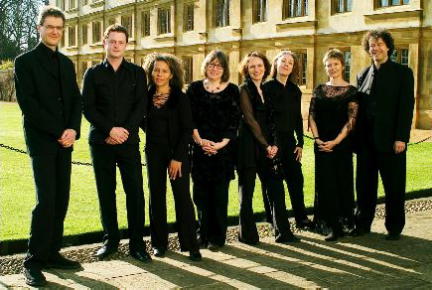|

Intensity of Playing
ROBERT HUGILL was at the start of
Endymion's 30th Birthday celebrations
Endymion's concert at the Temple Church, London UK, on Thursday 7 May 2009 marked three birthdays, Mendelssohn's 200th, Endymion's 30th and Lord Lloyd of Berwick's 80th. Lord Lloyd of Berwick was the sponsor of the concert and Endymion played two pieces by Mendelssohn, his String Quintet No 1 and Octet.
The chamber ensemble Endymion was formed from a group of National Youth Orchestra students in 1979 and since then has gained an enviable reputation as an ensemble with a broad and often adventurous repertoire. This relatively mainstream programme is balanced by the ensemble's birthday celebrations at Kings Place in June which consists of a series of programmes of more contemporary music.

At the Temple Church, Endymion opened with Haydn's String Quartet in C major, Op 76 No 3, 'The Emperor', so called because the second movement consists of four variations on the Emperor's Hymn, written by Haydn in emulation of 'God Save the King'.
The young players of the quartet, Krysia Osostowicz, Clara Biss, James Boyd and Adrian Bradbury, gave a vigorous performance of the opening movement with much emphasis on its rhythmic elements. A lively church acoustic was not the ideal setting for chamber music but the players' strong focussed tone ensured that we heard them to their best advantage. In the familiar tune of the second movement the players showed that they had a feel for a nicely turned melody with plenty of delicate moments and nice interactions. A charming third movement was followed by a return to sturm und drang for a final movement full of attack and vigor.
For Mendelssohn's String Quintet No 1 in A, Op 18, the quartet was joined by viola player Asdis Valdimarsdottir. Despite its opus number, the quintet was composed the year after the Octet. But in 1832 his friend and violin teacher Edward Rietz died and so Mendelssohn scrapped the original second movement (a minuet) and replaced it with a new Intermezzo, and it was in this form that the piece was published in 1832.
The Quintet is a substantial and attractively rich textured piece. The opening Allegro con moto starts as a series of relaxed lyrical conversations but develops into something denser and more strenuous, with the players moving from vigorous to delicate playing with ease. In the Intermezzo they relished the piece's lyrical beauty; essentially it is a song without words. The Scherzo is started off by the violas as a fugal movement, though its scurrying texture soon left the fugue behind. For once a Mendelssohn scherzo did not seem to be quite in fairyland. The finale featured some lovely rich textured playing; it was this feeling for texture which seemed to characterise the piece, whether the vigorous movements or the delicate ones.
Finally we had the more famous Octet where the players were joined by Fiona Capra, Catherine Myerscough and Sally Pendlebury. They all brought vigour and a fine symphonic sweep to Mendelssohn's remarkable piece. Written when he was just sixteen, it is remarkable not so much for the technical mastery as the emotional depth -- Mendelssohn must have been one scary sixteen year old.
Despite the octet's big sound they still captured the work's interplay of light and shade as well as bringing a new intensity of playing to the evening. In the second movement the poised calm of their playing was undercut with something darker and more mysterious. This mood was swept away by the delight of the scherzo, Mendelssohn in pure fairy mode, though these were certainly very perky fairies. Vigour returned in the finale, but something of the fairy atmosphere carried over though here the fairies were darker, more malevolent.
The whole performance had confidence and was characterised by an easy flow between the players, their vibrato-rich tones full of character. There was an occasional slip in ensemble at moments of stress, but this was easily forgiven.
The concert made a fine start to Endymion's birthday celebrations. These continue at Kings Place from 3 to 6 June 2009 when the programmes range from Poulenc and Brahms to Birtwistle and Feldman plus a selection of commissions written specially for the occasion.
Copyright © 9 May 2009
Robert Hugill,
London UK

FELIX MENDELSSOHN FRANZ JOSEPH HAYDN LONDON UNITED KINGDOM
| 
